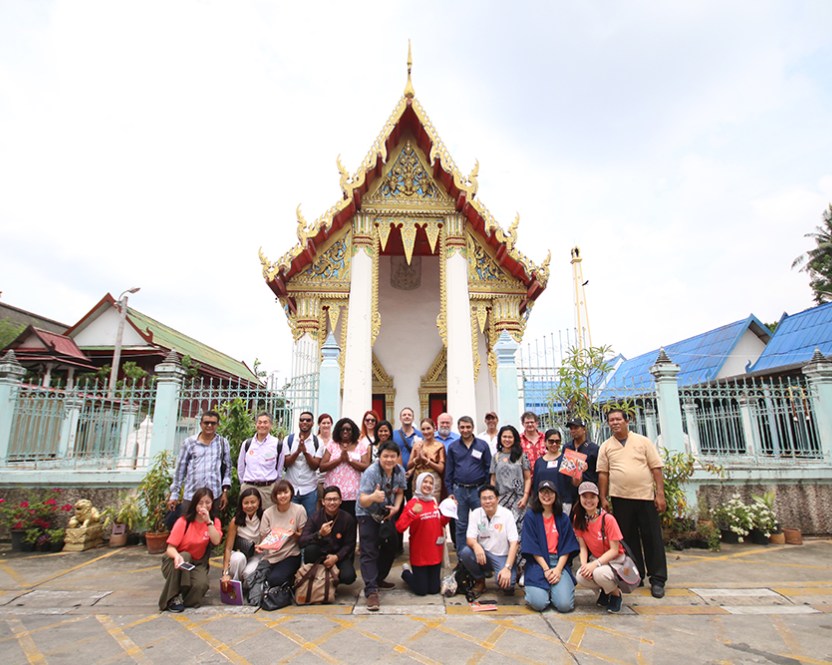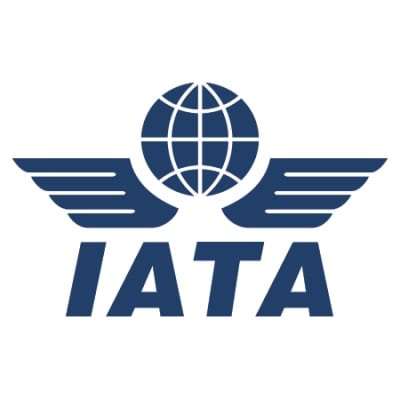

UNWTO Forum delegates savour Bangkok’s grassroots gastronomy
Bangkok, 31 May, 2018 – The second day of the 4th UNWTO World Forum on Gastronomy Tourism saw delegates fanning out across many parts of the Thai capital to enjoy the boundless diversity of its multi-cultural grassroots gastronomy.
In a carefully planned series of Bangkok Food Tours, the delegates enjoyed personal encounters with the city’s emerging generation of young Thai entrepreneurs, family-owned foodshops and third-generation immigrants from China and India – all united in providing visitors to Thailand an unmatched culinary experience.
All the tours were focussed on small and medium sized enterprises in many different parts of Bangkok, buried in the back streets of the Old City, in market-places or right on the corners of what is known as the city’s Wall Street. They included bakeries, dessert shops, noodle vendors and Thai culinary specialists.
All tours have been designed by a number of start-up entrepreneurs who are passionate about preserving not just Bangkok’s gastronomic culture but the entire environment in which they operate.
Mr. Yuthasak Supasorn, Governor of the Tourism Authority of Thailand (TAT), said: “We thought it would be good idea for delegates to enjoy half a day getting away from the conference presentations and actually experiencing Bangkok’s gastronomic diversity. We are glad that the feedback was very positive and hope that delegates will spread the word to their families, friends and colleagues.”
One itinerary led by Bangkok Food Tours (BFT) allowed participants to experience the first Historic Bangrak Food and Cultural Walking Tour, awarded Thailand’s best cultural tour programme. It deploys technology and service design process to help the local community by featuring local dishes.
Another itinerary led by HiveSters, took participants to Nang Loeng, where family-owned food-shops are bringing back the disappearing community and culture. Participants enjoyed the century-old market and taste traditional food.
A third itinerary by Local Alike focussed just on nine Thai auspicious desserts, each with different meanings and ways of cooking by SME eateries in the old town, all surrounded by ancient temples of over 100 years old. Delegates then visited the Princess Mother Memorial Park, dedicated to the grandmother of His Majesty King Mahavajiralongkorn who was also a great lover of Thai desserts.
The fourth itinerary designed by Trawell Workshop, featured multiple stops included in a Food x Technology City Pass covering a number of local communities, hostels and coffee shops in the vicinity of the city’s Giant Swing landmark.
Delegates also visited local markets and heard personal stories from the family-owned eateries, giving the entire experience a personal human touch. They later participated in a debriefing session to exchange views and share comments on what they saw and learned.
The tours will continue on the third and last day of the forum on June 1

WTTC and IATA Agree to Partner for Seamless Passenger and Better Traveller Experience
The World Travel & Tourism Council (WTTC) and the International Air Transport Association (IATA) have agreed to partner to achieve the benefits of biometrics and deliver traveller digital identity management throughout the Travel & Tourism sector for a seamless passenger experience.
The agreement, which was announced on the sidelines of the IATA AGM in Sydney, Australia, today, will mean that the two organisations will adopt a common approach, exchange information and work together to energise the entire sector to achieve international harmonisation through the use of biometrics standards and interoperability.
IATA, on behalf of its member airlines, is promoting a range of innovations to be considered for airports of the future, including the One iD initiative – IATA’s vision of an “end-to-end passenger experience that is seamless, efficient and secure” which aims at offering passengers a frictionless airport process allowing the possibility to walk through the airport without breaking stride.
Likewise, WTTC, through its Seamless Traveller Journey programme, is committed to working with the existing initiatives in this area to encourage the use of biometric technology and digital identity throughout the wider Travel & Tourism sector so travellers can enjoy a seamless, secure and efficient end-to-end journey.
Gloria Guevara, President & CEO, World Travel & Tourism Council, said: “Biometric technology is essential for the future of travel. It can help us make travel more seamless, more efficient and more secure. It improves the existing processes, reduces time for the traveller and will allow the sector to grow. WTTC and IATA are committed to maximize the potential of Travel & Tourism to create jobs and drive economic growth. By working together we can enhance security and improve the whole passenger journey.”
IATA is forecasting a rise from 4 billion annual air passengers now to 7.8 billion over the next twenty years, and UNWTO estimates global international arrivals to rise from 1.3 to 1.8 billion by 2030.
“The traveler experience has to improve if we want to achieve the growth potential. Last year one of every five jobs created in the world were in our sector, if we don’t use biometrics technology to improve the processes, we are not going to be able to achieve the potential of Travel & Tourism. Millions of jobs are at stake, so this is a priority for WTTC and our members. “
IATA Director General and CEO Alexandre de Juniac said: “The journey thorough the airport is often a frustrating experience. Passengers have to verify their identity at numerous points across their journey. IATA One iD project is helping the industry rapidly move towards the day when a face, iris or fingerprint will act as a single biometric travel token. Partnerships are key to help realise this vision and today’s agreement with WTTC will act as a strong catalyst for industry change.”

IATA tells governments: Avoid creeping re-regulation of the airline industry
Governments to take attention to the aviation world came in the IATA Director General’s Report on the Air Transport Industry at the 74th IATA Annual General Meeting (AGM) and World Air Transport Summit.
The International Air Transport Association (IATA) called for governments to facilitate the growth of global connectivity by avoiding creeping re-regulation, maintaining the integrity of global standards, and addressing a capacity crisis.
“On aviation’s core mission to deliver safe, secure, accessible and sustainable connectivity, the state of our industry is strong and getting stronger. And with “normal” levels of profitability, we are spreading aviation’s benefits even more widely. But there are challenges. Smarter regulation needs to counter the trend of creeping re-regulation. Global standards must be maintained by the states that agreed with them. And we need to find efficient solutions to the looming capacity crisis,” said Alexandre de Juniac, IATA’s Director General and CEO.
Re-Regulation
The deregulation of the air transport industry that began in 1978 in the US ignited global changes that enabled the spread of air transport’s benefits. The competition saw the price of air connectivity fall making air transport much more accessible. In 1978 the average person flew once every 6.6 years. Today the average is closer to once in two years.
A creeping trend of re-regulation, however, puts the gains of deregulation at risk. Citing regulatory actions from around the world, de Juniac noted that regulatory over-reach now includes attempts to prescriptively regulate passenger compensation, seat assignments, the ticket options that can be offered to consumers and prices charged for various ancillary services.
“Regulations must add value. In assessing that, regulators must recognize the power of competition and social media to safeguard consumer interests. Governments should not distort market effectiveness with regulations that second-guess what consumers really want,” said de Juniac.
This is the spirit of IATA’s “smarter regulation” campaign which asks governments to align with global standards, take into account industry input and analyze the costs of regulation against the benefits. De Juniac noted that one of the most exciting current regulatory developments is the sweeping review of US commercial regulations with the aim of keeping only those where the benefits outweigh the costs to both travelers and the industry.
Global Standards
De Juniac called for a vigorous defense of global standards that have guided the safe and efficient development of aviation. “We must take governments to task. It is unacceptable that global standards are being ignored by the very governments that created them,” said de Juniac.
De Juniac noted several examples:
India taxes international tickets in contravention of ICAO resolutions
States are planning new environment taxes even as the ICAO-brokered Carbon Offsetting and Reduction Scheme for International Aviation (CORSIA) is about to commence as the global market-based measure for managing emissions.
Nearly two decades after the Montreal Convention 1999 was agreed it is not universally ratified. Its important modernizations apply in only 130 states.
There is not 100% compliance with Chicago Convention Annex 13 requirements for complete accident investigations. Of the approximately 1,000 accidents over the last decade only about 300 accident investigations have been concluded with published reports.
Annex 17 of the Chicago Convention sets baseline security requirements. Yet ICAO audits reveal that only 28% of states meet them. Moreover, 37% of states fail on resolutions of security concerns.
Infrastructure
IATA urged governments to find sustainable solutions to ensure the infrastructure needed to meet growing demand for connectivity.
“We are in a capacity crisis. And we don’t see the required airport infrastructure investment to solve it. Governments struggle to build quickly. But with cash-strapped finances, many are looking to the private sector for solutions. We need more airport capacity. But be cautious. Expecting privatization to be the magic solution is a wrong assumption,” said de Juniac.
The privatization of airport infrastructure has not lived up to airline expectations. “As customers of many airports in private hands, airlines have far too many bitter experiences. Travelers also sense the problem. According to Skytrax, five of the top six traveler-preferred airports are public. Motivated by our members’ frustration, we did our own performance benchmarking. Privatized airports are definitely more expensive. But there is little difference in efficiency or investment levels compared to airports in public hands,” said de Juniac.
The results of airport privatizations run counter to the results of airline privatization which saw the cost of travel drop dramatically. Airlines do not accept that privatizing airports must lead to higher costs. And neither should consumers or voters. How can making the transport infrastructure more expensive—which means less competitive—be a legitimate public policy objective?” said de Juniac.
While IATA research did not reveal a one-size-fits-all solution to ensure sufficient, fit-for-purpose and affordable airport infrastructure, it did point towards positive experiences for consumers and airlines with variations of corporatization.
The 74th IATA AGM will consider a resolution on the privatization of airport infrastructure calling on governments to:
Focus on the long-term economic and social benefits of an effective airport as part of the country’s critical infrastructure,
Learn from positive experiences with corporatization, new financing models, and alternative ways of tapping private sector participation
Make informed decisions on ownership and operating models to protect consumer interests, and
Lock-in the benefits of competitive airport infrastructure with firm regulation.
